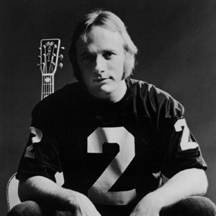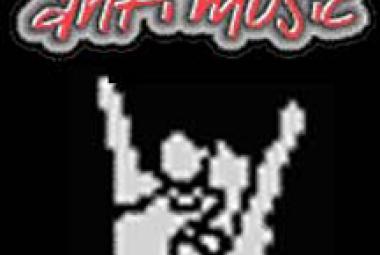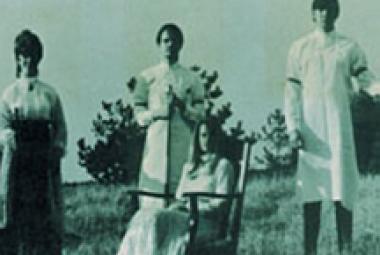Stephen Stills (born January 3, 1945) is an American musician and multi-instrumentalist best known for his work with Buffalo Springfield and Crosby, Stills & Nash (and Young). He performed on a professional level in several other bands as well as maintaining a solo career at the same time. Stills was ranked #28 in Rolling Stone Magazine’s 2003 list of “The 100 Greatest Guitarists of All Time” and #47 in the 2011 list. Stills became the first person to be inducted twice on the same night into the Rock and Roll Hall of Fame for his work with CSN and Buffalo Springfield.According to Neil Young, “Stephen is a genius”. (More from Wikipedia)
Van Dyke Parks is a native of Hattiesburg, Mississippi and was a musical prodigy. He studied the clarinet and also did some work as a child actor; while in his teens, Parks appeared in Grace Kelly’s final film, The Swan (1958). After graduating from college, he made some recordings for MGM Records in 1964 that included “Come to the Sunshine”; the touring band that he put together included a young Stephen Stills. Primarily though, he worked behind the scenes, playing as a session musician with Sonny and Cher (before they even took that name) and Paul Revere and the Raiders under producer Terry Melcher. His other early credits include playing Hammond Organ on the Byrds’ Fifth Dimension album and also keyboards for Judy Collins, plus arranging songs for Tim Buckley.
(June 2013/2)
* * *
Anyway, as difficult as it is to get your foot in the door – land that first recording contract, or get that first hit single – keeping at it is even tougher. Take Buffalo Springfield for instance; they were a mid-1960’s folk-rock band that was loaded with talent. The band took their quizzical name from the side of a steamroller; released three fine albums and a topical hit single that still gets a lot of radio play, “For What it’s Worth” (another Stephen Stills song on Buffalo Springfield, their debut album, “Sit Down, I Think I Love You” was a hit for the Mojo Men in 1967); had numerous line-up changes; and ultimately broke up – all in the space of barely two years. I heard an interview on the radio one time with one of the bandmembers, Stephen Stills I think; they knew that they were part of a classic band, but for a variety of reasons, they could not keep it going. Stills was 21 when Buffalo Springfield formed and 23 when they broke up; clearly, he had a lot more rock and roll in him.
Now what?
* * *
Buffalo Springfield started with a chance meeting of Stephen Stills and Neil Young; later, Stills and his friend Richie Furay were driving along Sunset Boulevard in L.A. and spotted a hearse. Stills was sure that it was Young’s, and sure enough, it was. Neil Young had another Canadian in the hearse as a passenger: Bruce Palmer. These four formed the band with drummer Dewey Martin.
As is often true, there were tensions in the band; Stephen Stills and Neil Young never really got along, and that has apparently continued to the present day.
* * *
David Crosby had been a member of the Byrds but was forced out in late 1967 due to friction with others in the band. By early 1968, Stephen Stills was one of several musicians who began sailing with Crosby on his yacht and jamming with him. One of the first fruits of these sessions was the apocalyptic tale “Wooden Ships”, composed by Stills, Crosby, and Paul Kantner of Jefferson Airplane.
David Crosby met Graham Nash of the British Invasion band the Hollies when the Byrds toured England in 1966; when the Hollies came to L.A. in 1968, they reunited their acquaintance. At a party given by Nash’s then-girlfriend Joni Mitchell in July 1968, Stephen Stills and David Crosby performed a new Stills song called “You Don't Have to Cry” with harmony vocals added by Graham Nash. The three realized that they had a unique chemistry, and Crosby, Stills & Nash was born.
As one of the few new bands, Crosby, Stills & Nash (Neil Young also played with them part of the time; the band was then called Crosby, Stills, Nash & Young) was a hit at the 1969 Woodstock festival, including their performance of “Wooden Ships”. There was a renowned exchange between songs, where David Crosby notes that this is just their second gig, and then Stephen Stills says: “This is the second time we’ve ever played in front of people, man, we’re scared s--tless.”
Crosby, Stills and Nash wasn’t really as new as that quote seemed to indicate; the band had released their debut album Crosby, Stills & Nash in May 1969, three months before Woodstock, and the recording sessions began in June 1968. I had always thought that Neil Young was the man peeking out of the door on the back cover of Crosby, Stills & Nash, but it was actually their drummer Dallas Taylor. Young did join up for their next album, Déjà Vu; the album was released under the name Crosby, Stills, Nash & Young (with drummer Dallas Taylor and bassist Greg Reeves also credited on the cover in smaller print).
Crosby, Stills, Nash and/or Young have released any number of cultural and counter-cultural touchstones over the years: “Ohio” (about the Kent State University shootings); “Woodstock” (written by Joni Mitchell based on what Graham Nash told her about the festival – Matthews’ Southern Comfort had a Number 1 hit in the U.K. with “Woodstock”); “Suite: Judy Blue Eyes” (written about Judy Collins); “Teach Your Children” (featuring Jerry Garcia of the Grateful Dead on pedal steel guitar; the song actually made the country charts); “Helpless” (one of Neil Young’s loveliest songs); “Southern Man” (on Neil Young’s excellent solo album, After the Gold Rush, with Lynyrd Skynyrd good-naturedly answering the song in their hit “Sweet Home Alabama”); “Love the One You’re With” (first released on Stephen Stills’ debut solo album, Stephen Stills – live versions of the “Southern Man” and “Love the One You’re With” appear on the Crosby, Stills, Nash & Young double album 4 Way Street); etc.
* * *
When Last Time Around was being wound up, Stephen Stills and Neil Young had already exited Buffalo Springfield; and Richie Furay (guitar and vocals) and Jim Messina (bass guitar) were about the only ones left.
One of the problems with creating new rock bands out of old ones is recording contracts: Just because a rock band breaks up doesn’t usually mean that the members of the band are no longer bound by them. You might have noticed over the years that even guest musicians playing on someone else’s album appear “courtesy of” another record company.
Poco became one of the earliest and most long-lived country-rock bands. Several record companies were interested in signing the new act, but they hit a road block: Richie Furay and Jim Messina were still signed to Atlantic Records as part of Buffalo Springfield. Meanwhile, Crosby, Stills, Nash & Young were having the same problem getting signed. David Geffen, then a young talent scout, arranged for the recording contracts for Stephen Stills and Neil Young to be swapped for those of Richie Furay and Jim Messina, so that CSNY could be signed to Atlantic Records, and Poco could be signed to Epic Records.
(April 2014)















